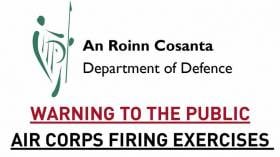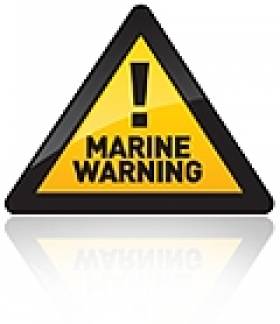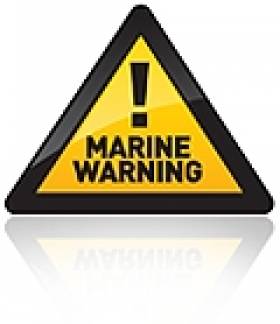Displaying items by tag: warning to the public
WARNING TO THE PUBLIC: DEFENCE FORCES LIVE AIR FIRING EXERCISES
On Tuesday 19th of April 2022 To Friday 29h of April 2022 from 10.00hrs to 16.00hrs (Excluding Saturday 23rd & Sunday 24th of April)
AT D1, GORMANSTON RANGES, CO. MEATH
____________________________
IT IS DANGEROUS FOR PERSONS, SHIPPING, LIVESTOCK OR AIRCRAFT ETC., TO BE WITHIN THE DANGER AREA WHILE FIRING IS IN PROGRESS.
____________________________
The DANGER AREA (EID1) comprises the lands of GORMANSTON CAMP and the air and sea area contained within a circle having a radius of 3NM (5.4KM) centred on GORMANSTON CAMP with an additional area contained within the segment centred on GORMANSTON CAMP and bearing 015° T, through MOSNEY RAILWAY STATION and 106° T, through GORMANSTON RAILWAY STATION seaward for the distance of 10NM (18.5 KM)
The DANGER AREA extends from SEA LEVEL to a height of 10,000ft.
RED FLAGS will be flown at BEN HEAD and GORMANSTON RAILWAY STATION when exercises are taking place.
____________________________
OBJECTS found on the RANGES may be HIGHLY DANGEROUS and the PUBLIC ARE WARNED of the risk of handling or interfering with such objects.
NO REWARD of any kind will be made for the finding of objects of a military nature on the ranges.
SECRETARY GENERAL
DEPARTMENT OF DEFENCE
RABHADH DON PHOBAL
CLEACHTADH LÁMHAIGH AEIR BHEO ÓGLAIGH NA
Ó Dé Máirt, an 19 Aibreán 2022 go dtí Dé hAoine, an 29 Aibreán 2022 ó 10.00 uair go 16.00 uair
(Seachas Dé Sathairn, an 23 Aibreán agus Dé Domhnaigh, an 24 Aibreán)
AG D1, BAILE MHIC GORMÁIN, CONTAE NA MÍ
TÁ SÉ BAOLACH DO DHAOINE, LOINGSEOIREACHT, BEOSTOC NÓ AERÁRTHAÍ ETC. A BHEITH LAISTIGH DEN LIMISTÉAR BAOIL FAD A BHÍONN LÁMHACH AR SIÚL.
____________________________
Is éard atá sa LIMISTÉAR BAOIL (EID1) tailte CHAMPA BHAILE MHIC GORMÁIN agus an limistéar aeir agus farraige atá laistigh de chiorcal a bhfuil ga 3 Mhuirmhíle (5.4 Chiliméadar) aige atá láraithe ar CHAMPA BHAILE MHIC GORMÁIN ina bhfuil limistéar breise atá laistigh den deighleog atá láraithe ar CHAMPA BHAILE MHIC GORMÁIN agus treo-uillinn 015° T, trí STÁISIÚN IARNRÓID MHAIGH MHUIRÍ agus 106° T, trí STÁISIÚN IARNRÓID BHAILE MHIC GORMÁIN i dtreo na farraige d’fhad 10 Muirmhíle (18.5 Ciliméadar)
Gabhann an LIMISTÉAR BAOIL ó LEIBHÉAL NA FARRAIGE chuig airde 10,000 troigh.
Beidh BRATACHA DEARGA ar foluain ag BEN HEAD agus STÁISIÚN IARNRÓID BHAILE MHIC GORMÁIN nuair a bhíonn cleachtaí ar siúl.
____________________________
D’fhéadfadh RUDAÍ a dtagtar orthu ar na RAONTA a bheith AN-BHAOLACH agus TUGTAR RABHADH DON PHOBAL i dtaobh an riosca go láimhseáiltear nó go gcuirtear isteach ar na rudaí siúd.
Ní bhronnfar AON LUAÍOCHT d’aon sórt ar rudaí de chineál míleata a aimsiú ar na raonta.
AN TARD-RÚNAÍ
AN ROINN COSANTA
WARNING TO THE PUBLIC AIR CORPS FIRING EXERCISES
WARNING TO THE PUBLIC AIR CORPS FIRING EXERCISES
On Monday 28th August to Saturday 9th September (inclusive) 2017 (excluding Saturday 2nd and Sunday 3rd September) From 09.00hrs to 17.00hrs
AT GORMANSTON, CO. MEATH
IT IS DANGEROUS FOR PERSONS, SHIPPING, LIVESTOCK OR AIRCRAFT ETC., TO BE WITHIN THE DANGER AREA WHILE FIRING IS IN PROGRESS.
The DANGER AREA (EID1) comprises the lands of GORMANSTON CAMP and the air and sea area contained within a circle having a radius of 3NM (5.4KM) centred on GORMANSTON CAMP with an additional area contained within the segment centred on GORMANSTON CAMP and bearing 015° T, through MOSNEY RAILWAY STATION and 106° T, through GORMANSTON RAILWAY STATION seaward for the distance of 10NM (18.5 KM)
The DANGER AREA extends from SEA LEVEL to a height of 10,000ft AMSL. RED FLAGS will be flown at BEN HEAD and GORMANSTON RAILWAY STATION when exercises are taking place.
OBJECTS found on the RANGES may be HIGHLY DANGEROUS and the PUBLIC ARE WARNED of the risk of handling or interfering with such objects. NO REWARD of any kind will be made for the finding of objects of a military nature on the ranges.
SECRETARY GENERAL
DEPARTMENT OF DEFENCE
WARNING TO THE PUBLIC - Firing Exercises
WARNING TO THE PUBLIC
AIR CORPS FIRING EXERCISES AND AIR DEFENCE ARTILLERY FIRING EXERCISES
From Tuesday 03 July to
Wednesday 04 July 2012
From 08.00hrs to 18.00hrs
At GORMANSTON, CO. MEATH
IT IS DANGEROUS FOR PERSONS, SHIPPING, LIVESTOCK OR AIRCRAFT ETC., TO BE WITHIN THE DANGER AREA WHILE FIRING IS IN PROGRESS.
The DANGER AREA comprises the lands of GORMANSTON CAMP and the air and sea area contained within a circle having a radius of 3NM (5.4KM) centred on GORMANSTON CAMP with an additional area contained within the segment centred on GORMANSTON CAMP and bearing 015° T, through MOSNEY RAILWAY STATION and 106° T, through GORMANSTON RAILWAY STATION seaward for the distance of 10NM (18.5 KM)
The DANGER AREA extends from SEA LEVEL to a height of 12,000ft.
RED FLAGS will be flown at BEN HEAD and GORMANSTON RAILWAY STATION when exercises are taking place.
OBJECTS found on the RANGES may be
HIGHLY DANGEROUS and the PUBLIC ARE WARNED of the risk of handling or interfering with such objects.
NO REWARD of any kind will be made for the finding of objects of a military nature on the ranges.
MICHAEL HOWARD
SECRETARY GENERAL
DEPARTMENT OF DEFENCE
Warning to the Public Air Corps Firing Exercises
WARNING TO THE PUBLIC AIR CORPS FIRING EXERCISES AND AIR DEFENCE ARTILLERY FIRING EXERCISES
From Thursday 18th November to Friday 19th November, 2010 (Inclusive) From 11.00hrs to 15.00hrs At GORMANSTON, CO. MEATH
IT IS DANGEROUS FOR PERSONS, SHIPPING, LIVESTOCK OR AIRCRAFT ETC., TO BE WITHIN THE
DANGER AREA WHILE FIRING IS IN PROGRESS.
The DANGER AREA comprises the lands of GORMANSTON CAMP and the air and sea area contained within a circle having a radius of 3NM (5.4KM) centred on GORMANSTON CAMP with an additional area contained within the segment centred on GORMANSTON CAMP and bearing 015° T, through MOSNEY RAILWAY STATION and 106° T, through GORMANSTON RAILWAY STATION seaward for the distance of 10NM (18.5 KM)
The DANGER AREA extends from SEA LEVEL to a height of 15,000ft.
RED FLAGS will be flown at BEN HEAD and GORMANSTON RAILWAY STATION when exercises
are taking place.
OBJECTS found on the RANGES may be HIGHLY DANGEROUS and the PUBLIC ARE WARNED of the
risk of handling or interfering with such objects. NO REWARD of any kind will be made for the
finding of objects of a military nature on the ranges.
MICHAEL HOWARD
SECRETARY GENERAL
DEPARTMENT OF DEFENCE


























































